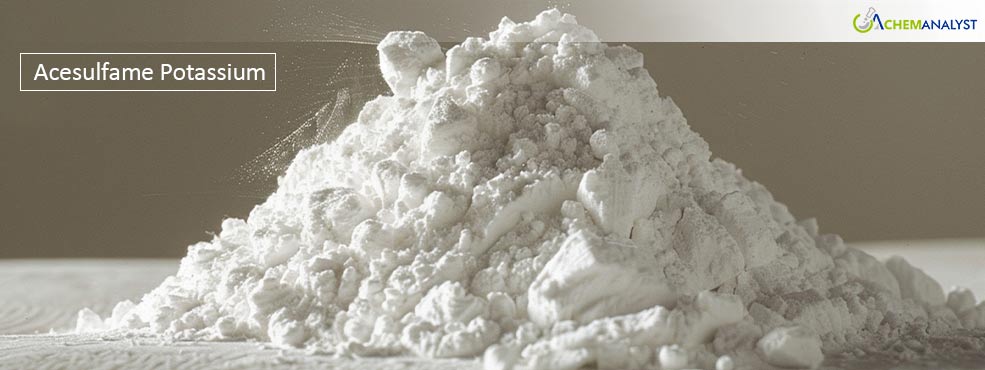Acesulfame Potassium Market Faces Sustained Price Increases in North America
- 19-Feb-2025 3:45 PM
- Journalist: Francis Stokes
North American markets are experiencing a persistent upward trend in acesulfame potassium (Ace-K) import prices, driven by a complex interplay of supply chain dynamics, regulatory changes, and shifting trade relationships with China, the world's largest producer. Industry analysts report that prices have surged at a continuous rate, affecting food and beverage manufacturers across the United States, Canada, and Mexico.
The primary factor contributing to this price escalation is the ongoing environmental compliance upgrades in Chinese manufacturing facilities, which have temporarily reduced production capacity at several major plants ahead of the Lunar New Year break. The annual Lunar New Year celebrations in China significantly impact the Ace-K supply chain, creating a cyclical disruption that ripples through the market. During this period, which typically spans several weeks, manufacturing facilities either operate at a reduced capacity or completely shut down, leading to a temporary supply vacuum. This is likely to considerably impact the overall supply availability for Ace-k, thereby impacting the overall trading dynamics across the global market.
Adding to the pricing pressure, increased shipping costs and logistical challenges continue to impact the transportation of Ace-K from Asian manufacturing hubs to North American ports. Container shortages and port congestion are likely to also extend delivery times and elevated freight costs, with shipping rates from Chinese ports to major North American destinations rising steadily.
The Ace-K market has seen increased demand from the food and beverage industry, particularly as manufacturers respond to consumer preferences for low-calorie alternatives. This growing demand, coupled with supply constraints, has created a seller's market, allowing suppliers to maintain higher pricing levels for Ace-K. North American food manufacturers have reported difficulties in negotiating Ace-K in favorable terms with suppliers due to the current market conditions and significant depreciation of the dollar against the Chinese yuan.
As a result, further, Industry experts predict that the elevated prices for Ace-K may persist through the medium term as the market adjusts to these structural changes. While some Chinese manufacturers are expected to complete their environmental upgrades by late 2025, the combination of strong demand including those for Ace-K, higher production costs, and ongoing logistics challenges suggests that prices are unlikely to return to historical levels shortly. The recurring impact of Lunar New Year shutdowns continues to add an element of predictable yet significant disruption to the supply chain, requiring importers to factor these seasonal variations into their procurement strategies and pricing models including those for Ace-K.
This situation highlights the complex interdependencies in the global artificial sweetener supply chain, including for Ace-K and the significant impact of Chinese manufacturing sector and North American food and beverage industries. As the market continues to evolve, stakeholders across the supply chain are adapting their strategies to manage costs while ensuring reliable access to this crucial food additive, including those for Ace-K.




